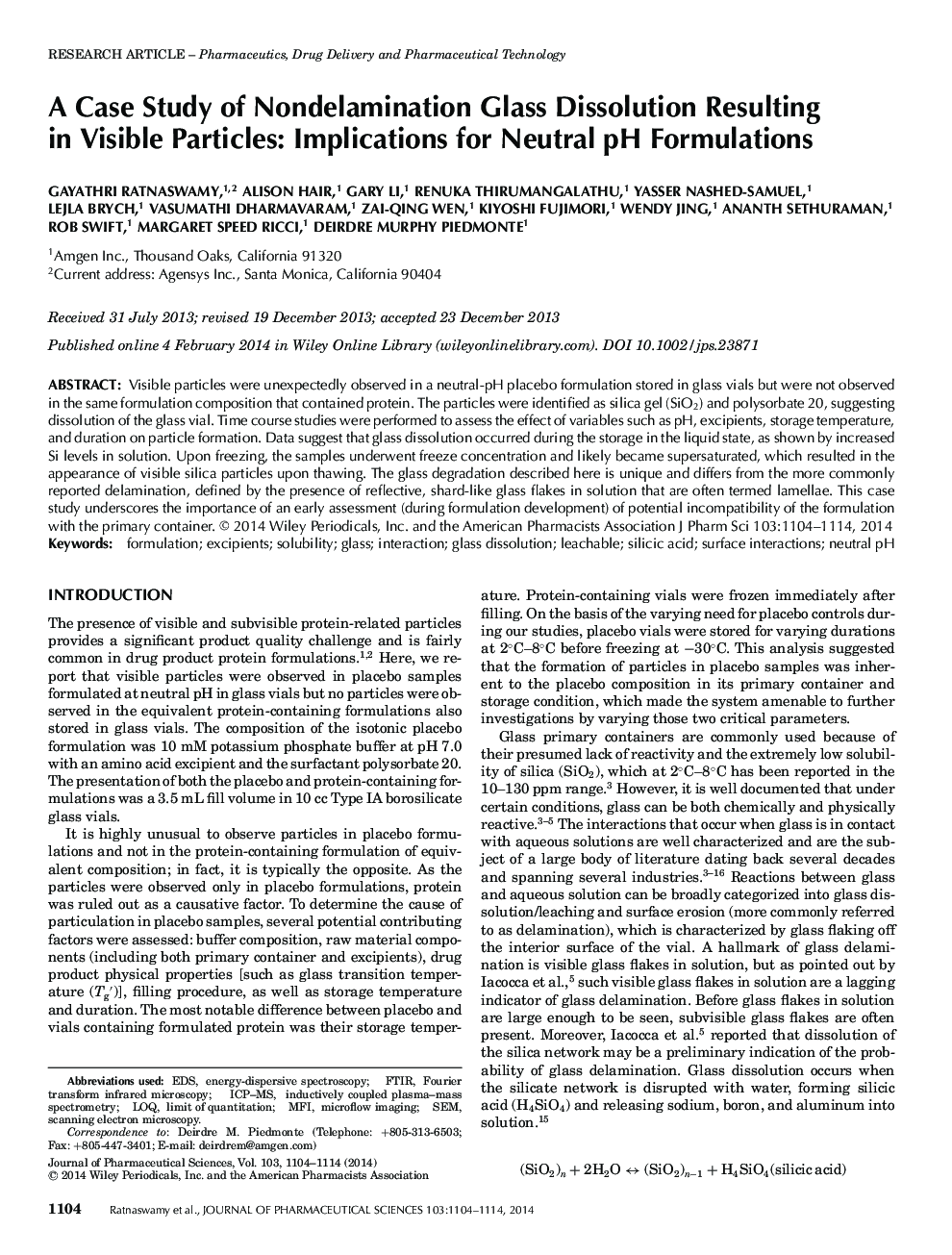| Article ID | Journal | Published Year | Pages | File Type |
|---|---|---|---|---|
| 10162382 | Journal of Pharmaceutical Sciences | 2014 | 11 Pages |
Abstract
Visible particles were unexpectedly observed in a neutral-pH placebo formulation stored in glass vials but were not observed in the same formulation composition that contained protein. The particles were identified as silica gel (SiO2) and polysorbate 20, suggesting dissolution of the glass vial. Time course studies were performed to assess the effect of variables such as pH, excipients, storage temperature, and duration on particle formation. Data suggest that glass dissolution occurred during the storage in the liquid state, as shown by increased Si levels in solution. Upon freezing, the samples underwent freeze concentration and likely became supersaturated, which resulted in the appearance of visible silica particles upon thawing. The glass degradation described here is unique and differs from the more commonly reported delamination, defined by the presence of reflective, shard-like glass flakes in solution that are often termed lamellae. This case study underscores the importance of an early assessment (during formulation development) of potential incompatibility of the formulation with the primary container. © 2014 Wiley Periodicals, Inc. and the American Pharmacists Association J Pharm Sci 103:1104-1114, 2014
Keywords
Related Topics
Health Sciences
Pharmacology, Toxicology and Pharmaceutical Science
Drug Discovery
Authors
Gayathri Ratnaswamy, Alison Hair, Gary Li, Renuka Thirumangalathu, Yasser Nashed-Samuel, Lejla Brych, Vasumathi Dharmavaram, Zai-Qing Wen, Kiyoshi Fujimori, Wendy Jing, Ananth Sethuraman, Rob Swift, Margaret Speed Ricci, Deirdre Murphy Piedmonte,
